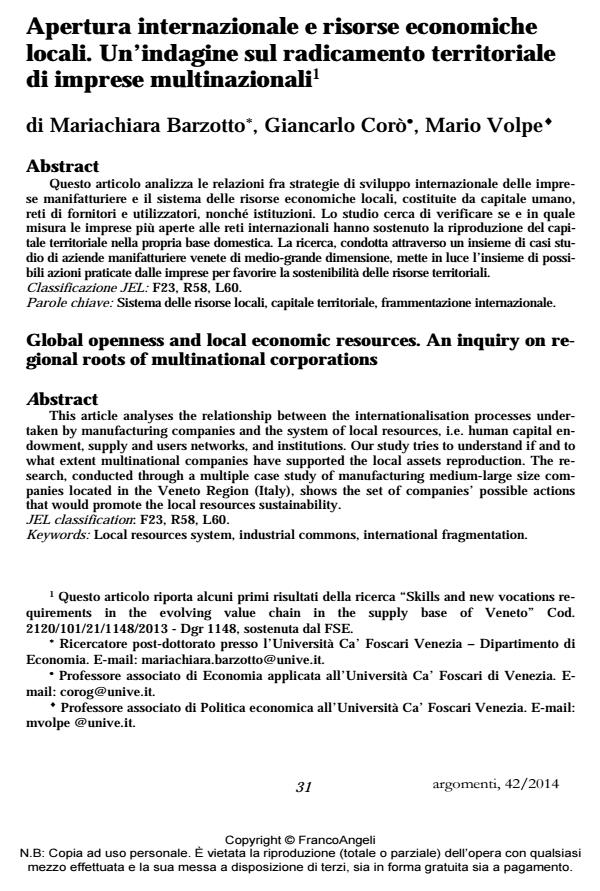Global openness and local economic resources. An inquiry on regional roots of multinational corporations
Journal title ARGOMENTI
Author/s Mariachiara Barzotto, Giancarlo Corò, Mario Volpe
Publishing Year 2015 Issue 2014/42
Language Italian Pages 23 P. 31-53 File size 142 KB
DOI 10.3280/ARG2014-042002
DOI is like a bar code for intellectual property: to have more infomation
click here
Below, you can see the article first page
If you want to buy this article in PDF format, you can do it, following the instructions to buy download credits

FrancoAngeli is member of Publishers International Linking Association, Inc (PILA), a not-for-profit association which run the CrossRef service enabling links to and from online scholarly content.
This article analyses the relationship between the internationalisation processes undertaken by manufacturing companies and the system of local resources, i.e. human capital endowment, supply and users networks, and institutions. Our study tries to understand if and to what extent multinational companies have supported the local assets reproduction. The research, conducted through a multiple case study of manufacturing medium-large size companies located in the Veneto Region (Italy), shows the set of companies’ possible actions that would promote the local resources sustainability.
Keywords: Local resources system, industrial commons, international fragmentation
Jel codes: F23, R58, L60.
Mariachiara Barzotto, Giancarlo Corò, Mario Volpe, Apertura internazionale e risorse economiche locali. Un’indagine sul radicamento territoriale di imprese multinazionali1 in "ARGOMENTI" 42/2014, pp 31-53, DOI: 10.3280/ARG2014-042002